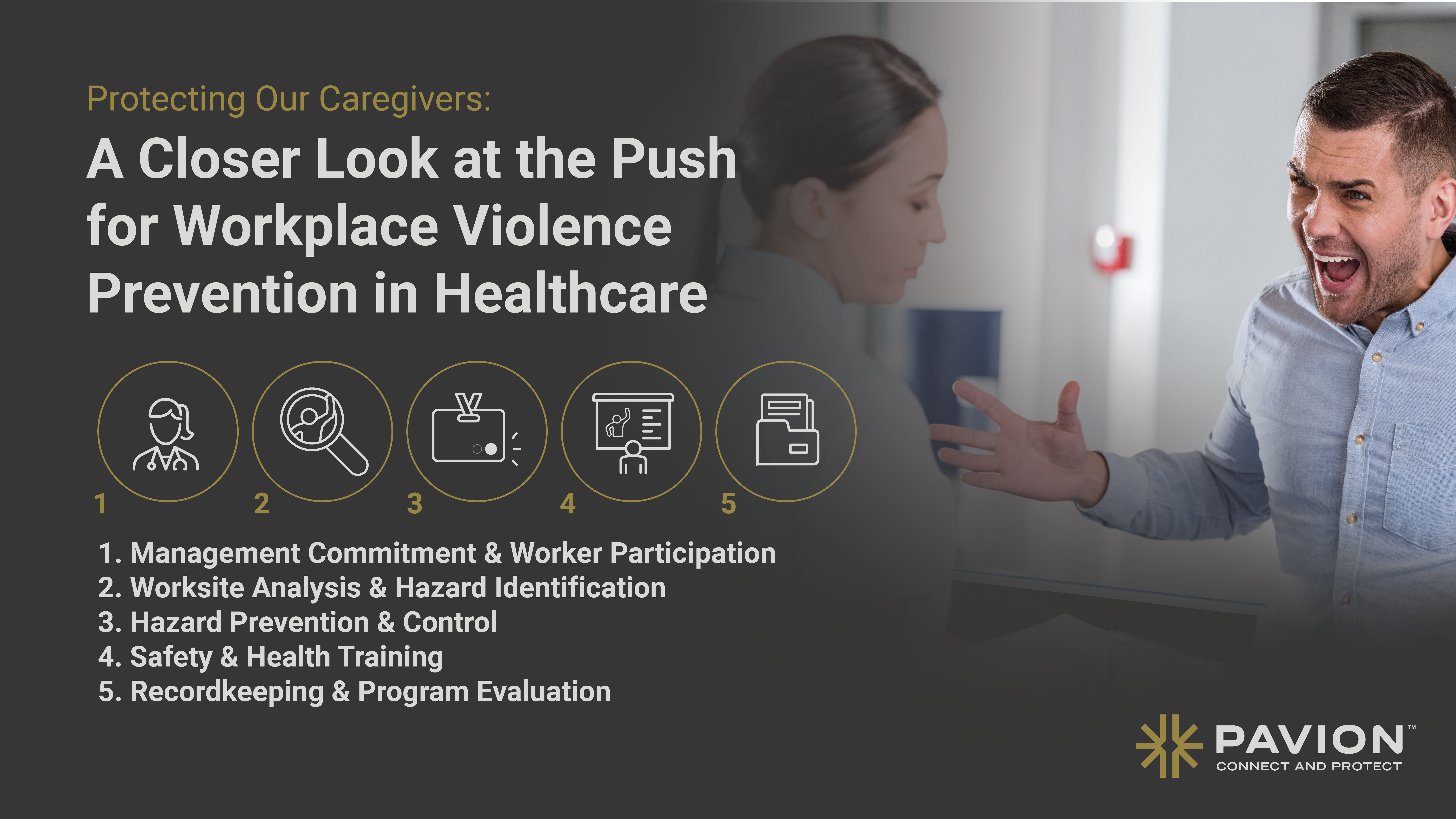
Protecting Our Caregivers: A Closer Look at the Push for Workplace Violence Prevention in Healthcare
Healthcare workers dedicate their lives to caring for others—but too often, they are left vulnerable to violence on the job. Now, sweeping legislation at both the state and federal levels is working to change that.
This year, Oregon passed a groundbreaking workplace violence prevention bill aimed at protecting healthcare workers from assault and abuse on the job. Nationally, the reintroduction of the Workplace Violence Prevention for Health Care and Social Service Workers Act—also called the SAVE Act of 2025—is gaining momentum. These laws mark a powerful shift toward accountability, safety, and support for the people who keep our healthcare system running.
But legislation is just the first step. Effective workplace violence prevention must be built on a comprehensive, actionable framework that engages leadership and empowers staff at every level. Here’s what that looks like:
1. Management Commitment & Worker Participation
A successful prevention program starts with clear direction from leadership. Violence must be declared unacceptable—full stop. This message should be supported with concrete goals, budgeted resources, and clearly defined roles.
But top-down support isn’t enough. Healthcare workers must have a seat at the table. Establish safety committees or task forces that include staff from all departments and shifts. Their insights are vital for identifying risks and shaping practical, on-the-ground solutions.
2. Worksite Analysis & Hazard Identification
Every facility is different, and so are its risks. Begin with a comprehensive risk assessment to identify areas of vulnerability—entrance points, staffing patterns, patient flow, or past incidents.
This isn’t a one-and-done task. Reassess regularly and after any incident. Use proven tools like Failure Mode and Effects Analysis (FMEA), employee surveys, and direct workplace inspections. Listen to staff. Their experiences are key to uncovering hidden hazards.
3. Hazard Prevention & Control
Once hazards are identified, action must follow.
- Engineering controls: Secure access points, install panic buttons, improve lighting in isolated areas.
- Administrative controls: Enforce visitor management policies, implement de-escalation protocols, ensure adequate staffing—especially in high-risk units like Emergency Departments or Behavioral Health.
- Behavioral controls: Flag patient histories involving prior violence, and consider relocating high-risk individuals when possible.
These solutions must be maintained and monitored continuously to ensure they’re working.
4. Safety & Health Training
Training shouldn’t be one-size-fits-all. Tailor content based on roles: clinical staff, security teams, administrative support, or managers. All training should include:
- Recognizing warning signs and escalating behaviors
- Facility-specific prevention policies and procedures
- Verbal de-escalation and self-defense techniques
- Emergency response protocols and post-incident support
Training should be refreshed annually and updated whenever policies or risks change.
5. Recordkeeping & Program Evaluation
Accountability lives in the data. Keep detailed records of all incidents—including near-misses—along with investigation outcomes, training completions, hazard assessments, and follow-up actions.
Regularly review these records to identify trends and evaluate program effectiveness. Use findings to refine policies and close gaps before the next incident occurs.
Moving Forward
Healthcare workers deserve to feel safe at work. As legislation like Oregon’s new law and the SAVE Act of 2025 continue to gain traction, it’s critical that healthcare organizations take a proactive, structured approach to workplace violence prevention.
At the heart of this issue is a simple truth: when we protect our caregivers, we strengthen our entire healthcare system.


